Open Cities 8 Opening Across
Open Cities 8
Opening Across
Open cities means more than harmony or cohabitation between ethnic minorities and native majorities. If the public realm provides a conducive physical setting for encounters they can take myriads of forms and reasons. Common ground can bring people together in the public realm across diverse groups, different cultures, ages, lifestyles, economic status, a myriad of diversity.
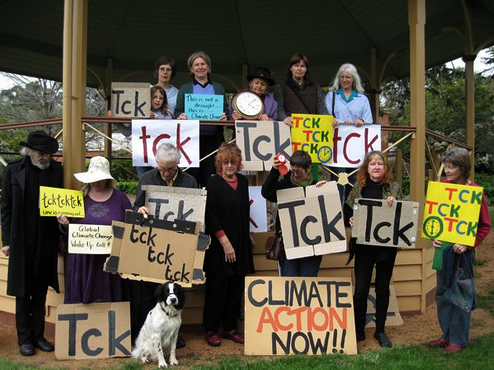
Dia 1 Cities constitute the public realm for common concerns
Public realm, a commons for social networks
Just one example: an event to show concern about global warming took place simultaneously in the public realm of cities throughout the world. On Monday autumn equinox day, 294 spontaneous gatherings occurred in 62 countries throughout the globe.
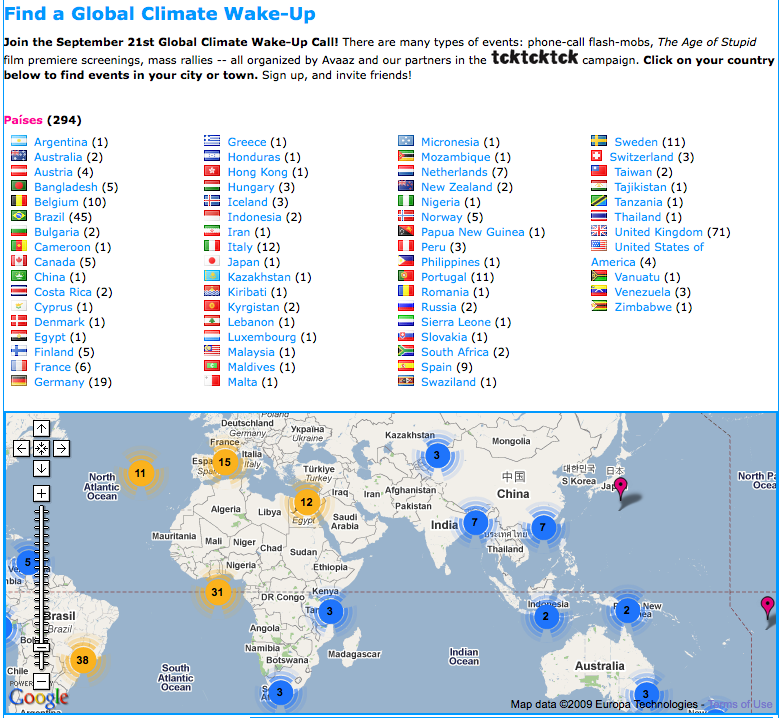
Dia 2 Global climate woldwide wakeup initiative
The amount of events in so many different venues confirms the power of networking, analysed with great perception by Manuel Castells in his latest book ‘Communication Power’ (Oxford University Press). He illustrates how ubiquitous information technology enables large amount of individuals to make a difference in expressing their support or opposition to events largely out of their control. The use of the internet by the many determined the outcome of Obama’s election; the use of mobile phones produced a surprise result of the Spanish elections after the government lied to the people about the perpetrators of the train bombing. Protests against G8 and G20 and the environmental movement, truly global in nature manifest themselves in public places and on the streets of open cities. According to Castells, in the information society ‘public space’ is where communication networks are able to include far greater cultural diversity and multiplicity of messages than in any other public space in history. This virtual dimension is an inherent part of ‘open cities’ and needs to remain a ‘commons’, beyond reach of those who relentlessly seek its control and domination.
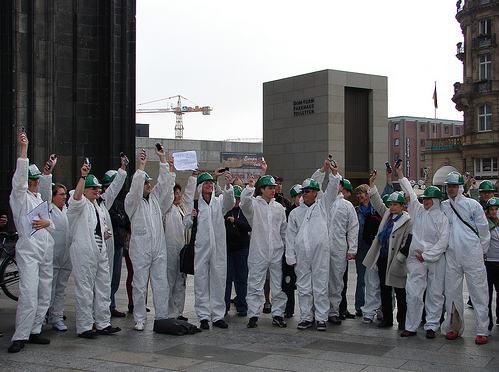
Dia 3 Holding up phones in unison in Cologne Germany
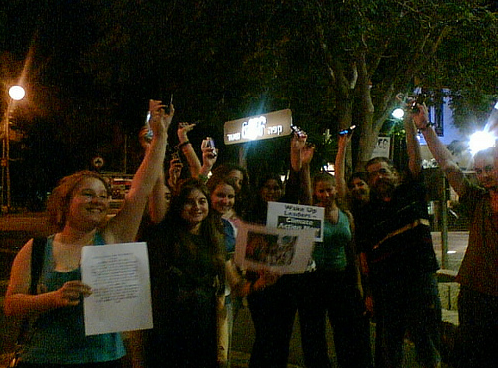
Dia 4 Holding up phones in unison in Haifa
Coming back to last Monday’s happenings, what motivated people from all walks of life in all parts of the world was their concern for our shared planet. Only an open public realm and an unimpaired ‘commons of communication networks’ made it possible for them to gather freely, manifest their preoccupations, hold up their phones in unison and call their top politicians to find out what they are actually doing about global warming.
Unity in diversity
As diverse the people were who got together for their common cause, were the places and actions in which they participated. Some held up posters, others appeared in disguises, yet others lay down in the streets or in parks, played music, danced. Some came in groups, others alone to meet like minded people and share their feelings, their urge to hold their politicians to account. There were groups of senior citizens, young mothers with prams and toddlers, cyclists, businessmen in a hurry. For some the event lasted a mere five minutes. The main thing was interaction, intervening in common, communion among those with similar dedication to do their bit toward raising awareness about the need to treat our finite commonwealth with care.

Dia 5 Mass participation in climate change initiative in Harare Zimbabwe
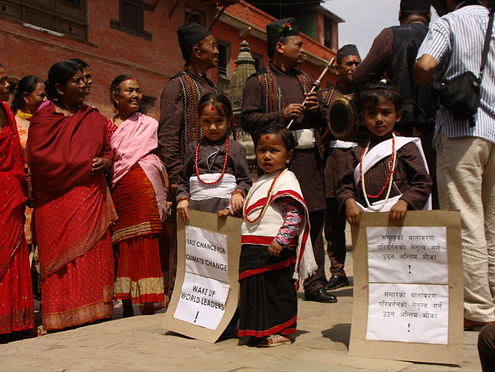
Dia 6 Participation in climate change wakeup call in Kirtipur Nepal
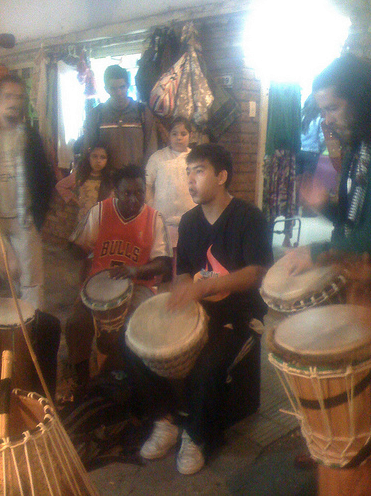
Dia 7 Celebration of climate change wakeup call in Cordoba Argentina
This was just a single small event on the path to the United Nations Copenhagen Climate Change Conference at the end of the year. Word of mouth travelled over the internet (ww.Avaaz.org) as well as throughout neighbourhoods, work places, premises of voluntary associations preoccupied with climate change. The combination of material and virtual openness was what made these events so effective, so powerful. This is also what Open Cities are about.
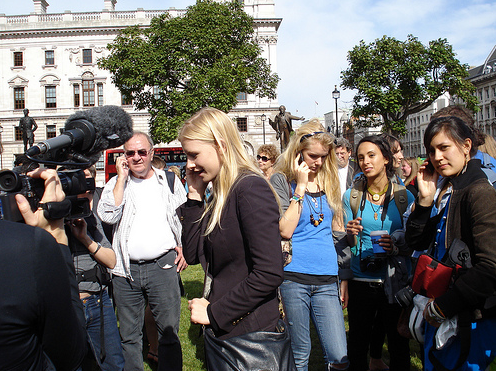
Dia 8 Getting through to Prime Minister Gordon Brown on climate change wakeup call day in Parliament Square London
End.
